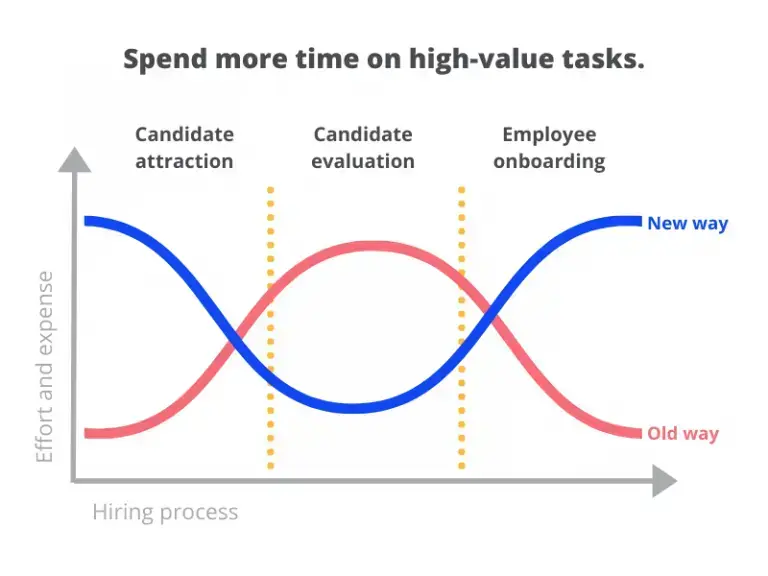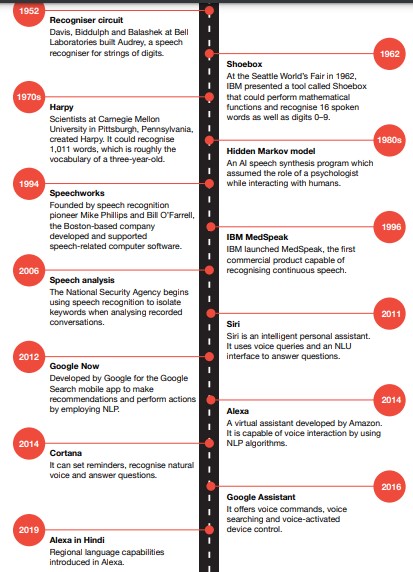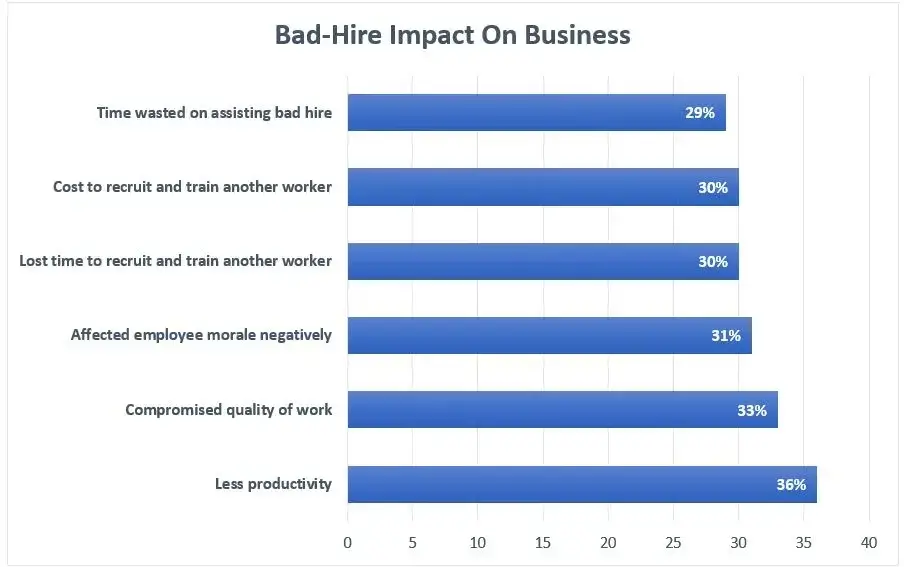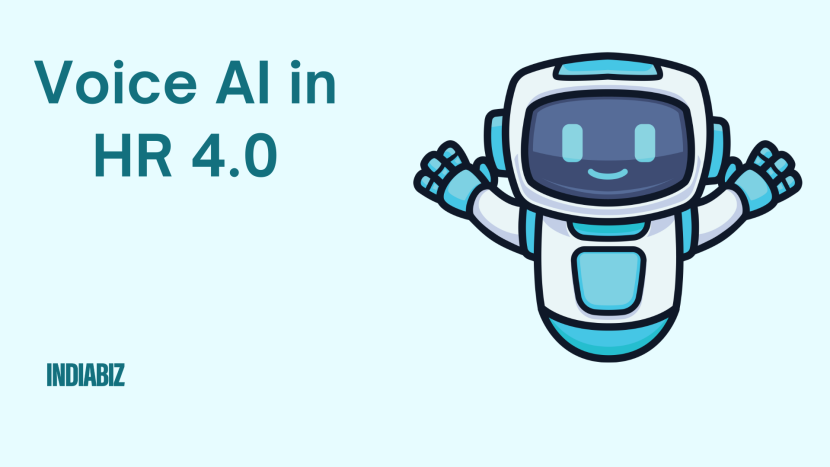In the ever-changing recruitment environment, the old ways of phone calls, missed connections and lengthy talks are becoming outdated. Key businesses and leaders have adopted Industry 4.0 technologies for maximum benefit and this is also true in HR field.
The concept of “Smart HR 4.0” (AI in HR) has thus been embraced by HR professionals themselves as they seek to incorporate these technologies into their operations. This approach called Industry 4.0 uses digital technologies such as AI, IoT, big data and data analytics for efficient HRM (Digital HRM).
Therefore, technology integration enabled automation of some functions such as ATS (Applicant Tracking Systems), RPA (Robotic Process Automation), Social Media Recruitment and HRIIS – Human Resource Information Systems.
One of the reports by Eightfold.ai that is titled “A New Model for Recruiting and Managing People” states that to find the right talent, companies should maintain a pool of candidates 200-250 times larger than their current employee number.
The business growth makes such an assignment more difficult. With 10,000 employees in place, the company’s candidate pool must have 2-2.5 million potential hires. It is difficult for even experienced experts in human resources to handle such a large number of profiles.
Traditional Human Resource Management
The reason why manual screening of resumes is a cumbersome process has to do with the fact that almost 75-80% of resumes received are not qualified for that position. In general, just 5% of applicants for a given job posting possess the necessary qualifications.
Often this is as a result of jobs being advertised inappropriately, described in wrong terms or failing to resonate with job-seekers whose skills match the vacancy. This manual screening process takes an average of 23 hours for a recruiter to assess and shortlist candidates for a single hire.
Artificial Intelligence in HR
A revolutionary technology called Conversational AI in recruitment is solving the collective frustration with talent teams and recruitment agencies worldwide by changing how organizations find and engage top-tier talent. Gone are those days when dialing used to be done manually while dialogues were endless; Today’s employee acquisition is invigorated by smart assistant that is sophisticated and efficient.
This advanced technology comes in the form of conversational AI which smoothly interfaces between candidates and talent teams thus introducing a new era of hiring cycles that are streamlined and highly effective.

As per the research..,
The EY-NASSCOM report (August 2023) titled “Breaking ground: unravelling the DeepTech potential in Indian B2B SaaS” states that 99% of the total 201 Indian B2B SaaS companies are using DeepTech for their customer use cases.
In terms of functions that leveraged Deeptech, Sales & Marketing were found to be at the top followed by Human Resources and Operations. The top three use cases for HR & operations are AI-based recruitment systems; Conversational AI for employees and AI-based workforce analytics.
Conversational AI Tools in HR
In contrast to the recent past where text and speech-based tools were used to simplify business processes such as customer service and account management, people can now use conversational AI tools. The primary types include:
1. Chatbots
Traditional chatbots in HR were not so fast as the actions were decided using decision trees which made interactions unreliable and hard.
Unlike all chatbots that draw from pre-programmed responses, conversational AI chatbots leverage their human interactions through conversations with clients by embracing the same language and offering variable situations which makes them better adjusters. These be quickly plugged into websites, apps and social media channels which in turn makes customers approach easier.
2. Voice Assistants
Spoken words are converted into machine-readable text by voice assistants who read both content and intent of the message. As an example, within a finance department, a voice command can quickly fetch a specific invoice thus eliminating manual efforts thereby ensuring prompt access.
Moreover, call centers could integrate voice AI systems which would streamline processes further while cutting down costs at great length plus improve overall productivity.
Comparing Voice and Non-Voice Channels for Candidate Outreach
First, let us understand the concept of voice and non-voice channels for candidate outreach.
Voice Channel refers to the stage when interviewing the shortlisted candidates, whereas non-voice channel refers to the starting stage of the screening process such as sharing job details with candidates.
1. Communication Medium
- Voice Channel: Integrates the use of natural language into conversations through calls.
- Non-Voice Channel: The method could be oral or written by means of texting, emails or social media.
2. Real-time Interaction
- Voice Channel: Gives a chance to engage in real time through the call.
- Non-Voice Channel: Usually, it is about waiting some time for getting the feedback.
3. Tone and Emotion
- Voice Channel: Transmits the tune, bass, and harmony of human voice.
- Non-Voice Channel: Difficult to convey the tone and emotion with such a medium.
4. Response Time
- Voice Channel: Instant response
- Non-Voice Channel: There might not be an instant response.
5. Complexity of Message
- Voice Channel: Ideal for important and in-depth discussions
- Non-Voice Channel: For discussing basic and concise information.
6. Documentation
- Voice Channel: Not possible to have any written record of the conversation.
- Non-Voice Channel: It is possible to have every conversation in written format.
7. Convenience
- Voice Channel: Requires immediate attention.
- Non-Voice Channel: Gives flexibility in the timing of responses.
8. Personalization
- Voice Channel: Allows for personalized connections.
- Non-Voice Channel: May require more effort to personalize.
9. Cost
- Voice Channel: May include expenses of making voice calls or added charges.
- Non-Voice Channel: This medium is considered to be more cost-effective, as it excludes data costs.
10. Engagement Level
- Voice Channel: High engagement due to direct interaction.
- Non-Voice Channel: Engagement depends on the medium used.
11. Privacy Concerns
- Voice Channel: May be seen as invasive if unsolicited.
- Non-Voice Channel: Generally considered less intrusive.
12. Preferred Use Cases
- Voice Channel: Suitable for interviews, complex discussions, and networking.
- Non-Voice Channel: Ideal for initial outreach and sharing information.
Evolution of Voice Technologies
Though the rise of voice-based AI dates back to the 1960s, which is at the time when Siri and Alexa were not yet invented, people nowadays have become more reliant on the voice based personal assistants. With IBM Shoebox, which came in the 1960s, people started getting acquainted with digital speech recognition, having the opportunity to identify 16 words and 9 digits.
As advances in the field continued, this was followed by Carnegie Mellon’s 1,011-words capable Harpy Program in the ’70s, and then Dragon Dictate in the ‘90s which was the first-ever speech recognition system. The 2000s witnessed the first smart speaker revolution featuring Siri and Google Now, and then Alexa and Cortana became prominent.

These developments were groundbreaking as they made voice control AI feasible strengthening the neural network through huge amount of data and now becomes the baseline for today’s technologies of trendy voice-driven AI tools branded by modern tech corporations. In time of technology sparkle, required effectiveness of any tool is continuously growing in parallel, providing instant access and convenience which are in demand for population now and in future.
A joint research by the Mobile Marketing Association (MMA) and digital firm Isobar highlight the fact that the Indian market has started moving fully towards voice-based technology which is also aided by the fact that more and more devices are connected to the Internet and smartphones and their uses are on the rise.
With the country experiencing an incredible 270% voice search annual growth, which places it at the top of the list of the world’s most voice-first internet markets. Already having garnered 82% of voice powered technology users, speech-activated technologies are the very force impulsively propelling the commerce development.
According to the predicted analysis by Statista, there is a possibility that the number of digital voice assistants might exceed 8.4 billion units by 2024. This growth profile of voice-based AI is vital for businesses to take advantage and proactively embrace voice-based techniques to remain competitive.
What are the Benefits of Voice AI in Hiring Process
The use of AI in human resources (HR) is a new trend as Voice AI has made recruitment process easier, due to its capability of handling the main recruitment processes and taking over the mundane tasks. Below are the benefits:
1. Great Candidate Experiences
Using enterprise voice assistants with AI capabilities, candidates can be provided with an individualized experience by analysing their profiles, providing round-the-clock support, and promoting them to every step of the employment procedure. This helps to make candidate experiences better along with positive employer branding.
2. Resume Sourcing and Interview Scheduling
With the help of machine learning tools, voice assistants help in shortlisting resumes, make interview appointments based on the required job descriptions. In some cases, it also helps in pre-screening interviews, thereby providing recordings and reports to the human interviewers.
Such resources help organizations to save time, perform fewer interviews while keeping the quality of candidates hired, and lower down both time to hire and cost to hire.
3. Cost Reduction in Hiring
In order to avoid hiring candidates that don’t fit the required job description and reducing turnover costs, voice enabled chatbots help in understanding the candidate’s persona. This increase in candidate engagement helps in reducing the overall cost of the hiring process.

(Source: Career Builder Survey on impact of bad-hiring on a business)
4. Unlocking Hidden Talent
AI-enabled voice assistants open up opportunities of hidden talent when working on a comprehensive pool of candidates from many sources like internal database and social profiles. And since turnover-costs are reduced, via this efficient recruitment strategy, and the time-to-hire is cut down, this initiative promotes motivation and avoids unnecessary efforts during onboarding.
5. Proactive Communication
The system can be configured to send emails, text messages, or call to update the candidates on their application status. With this, the potential candidates not selected earlier can be revisited again in future.
6. Versatile HR Automation
Apart from the hiring process, it is possible to configure various HR operations, including employee onboarding, feedback collection, training, and performance management. Also, it can be easily aligned with one AI-driven platform.
What are the Emerging Companies using Voice AI for Human Resources?
Highlighting those companies who innovatively use Voice AI in HR, is the headline on those stages which this technology serves for in the recruitment field.
1. Babblebots.AI
Babblebots is a Mumbai based company incorporated in 2022, has been fortunate to secure an undisclosed amount in a pre-seed round very recently led by some of the Gupshup and Junglee investors/founders. The company will use the funds from the next seed round to bolster its AI/ML, and implement the exercises based on the product-led growth model.
With upcoming AI-Recruiters that imitate human interviews in 20+ languages, it also increases the possibility of customization for branding of the company. The subscription-based service has proven the 10X reduction in hire times and an increase of 500% in the offer-interview ratio using its ML algorithms and by providing features such as interview scheduling, assessment management, and analytics.
2. EvueMe
EvueMe is a Delhi based company has recently got seed funding of $53.8K. As per the recorded figures of 2022, the valuation stands at $1.3 million and revenue at $6.66K. The post-round ownership report as of January 10, 2022 shows that the founders hold 70.05% ownership which is equal to a net worth of INR 6.73Cr.
The platform helps the employers’ with tools to asses candidate skills and jobs experience to ensure that the recruiters, RPOs, and employment placement agencies efficiently complete their recruitment process.
Through AI, EvueMe eliminates some interviewing tasks – moderating conversations, rationalizing results. The technology provides the platform with an additional solution that assists students in preparing for job interviews by offering interactive mock interviews within digital platforms.
3. Hirex.ai
Hirex.ai is a Hyderabad-based company , established in 2019, secured $19.3k in funding in May 2022, valuing the company at $5.28 million. With a total funding of $144K across two rounds, their latest funding was led by SucSEED Indovation, with IIIT Hyderabad being a key institutional investor.
Notably, hirex.ai scales in voice-AI platform, virtue of which is the no-code development of virtual assistants capable of classical and automated level one technical interviews. Despite the fact that 70% of job type candidates are usually not taken into account at the screening phase, hirex.ai tackles this dilemma through the bot-assisted voice-based system of interviews that can simultaneously interview mammoth amounts of candidates with the help of Talent Acquisition Groups (TAG).
This product offers the full spectrum, including automatic score allocation, a multi-faceted assessment mechanism and real-time applicant progress updates, thereby facilitating the recruitment process and making it free from human intervention.
4. Callify
Callify is founded in 2016 by Chetan Indap. It is a company in Mumbai that uses voice tech. With total three rounds, the company has been successful in raising funds worth $932K.
The recent seed round on Dec 14, 2020 was of $563K where 45 investors like Malpani Ventures, Aniruddha Narayan Malpani, Pravin Kulkarni, and Axis Capital joined. The valuation reached $2.4 million in April 2021. The owners hold 64.75% of shares, while angel backers have 17.24%, fund investors 7.81%, others 7.76%, and enterprise investors 2.47%.
Using Voice AI and virtual assistants, the company helps the recruiters to check leads faster, increase close rates, lower the hiring costs, and thereby saving over 70% of unproductive time.
Few notable transactions…
For the last decade, the rise of new companies in the number of 230 and more in India has been noticeable. All of them are using AI to recruit employees in India.
However, out of these companies only 67 corporations have garnered $638M of investments in total, which is a relatively low amount considering the challenges currently faced by the sector. Only 13 companies did the extraordinary feat of raising funds over $5 million.
The lower number in this part of the segment is mostly explained by 8 M&A deals which have been carried out so far.
What are the Emerging AI HR Startups?
1. Rootle
Rootle helps in revolutionizing the process of recruitment by saving 80% of recruiter’s time in pre-screening the applications by using Gen AI and Voice-powered conversational assistant. The results are evident with higher candidate engagement using voice as a medium to communicate over traditional mediums of communication like emails or chats.
For this advancement, Rootle is a pioneer of India’s very first Recruit LLM powered by a 2T Token Base Model that successfully recognizes things as precise as 95%. This has won over the competitors like ChatGPT and Bard because it has reached 2x superior performance. Rootle charges customers with subscription-made pricing schemes.
The company delivers services to a large number of industries which include Automobiles, Banking, Financial Services & Insurance (BFSI), consumer durables, e-commerce, electricals, Fast Moving Consumer Goods (FMCG), oil & gas, Information technology, pharmaceuticals, retail, transport & logistics etc. Also, the company caters to the hiring needs across entry level, mid-level, and senior positions.
2. Kelsa
Kelsa, founded in 2016 in Bengaluru is a platform which helps in automating the candidate screening process using virtual recruitment assistant. The recruiter can start the process by just uploading the job description or mentioning any specifications in the questionnaire. After this process, Kelsa starts with the interview process automatically. This platform can also prove to be useful for any corporate enterprises, startups or recruitment agencies.
Apart from these two startups, there are different startups such as Eightfold.AI, Hirect, IDfy, and more that are using AI for human resource management.
Key Takeaways
In accordance with the expected market growth forecast of BlueWeave Consulting for conversational AI market in India, a steep growth curve with a projected CAGR of 24.58% is anticipated between 2023 to 2029. The expansion of this technology is due to the growing demand for smooth customer experiences and the thriving e-commerce industry.
- The development of Voice AI in the domain of recruitment process is the most evident indicator of change from the traditional methods as it has already made it possible to reduce the time and to improve the hiring experience for both candidates and recruiters by eliminating the number of hours in the whole procedure.
- Numerous recruitment stages from initial candidate screening to face to face technical interviews can be carried out via using voice assistants with less efforts.
- Voice over chatbots have also the advantage of giving exact analytics and reporting on candidate-level emotions, interests, and conversation summaries.
- Positive candidate experience in conjunction with increased employer branding due to personalized communication, 24/7 support, and assisted recruitment process.
To summarize, the use of Voice AI in the recruitment process not only solves the problems faced by the traditional methods but it also brings the industry into a more efficient, automated, and candidate-friendly future. This phenomenon validates the projections by BlueWeave Consulting market forecast of USD 1,037 million in 2029 indicating that conversational AI will continue to grow in the Indian market.
Prepared By

Nishtha Gurnani
Investment Banking Analyst – IBGRID
MBA in Finance (Gold Medalist)
